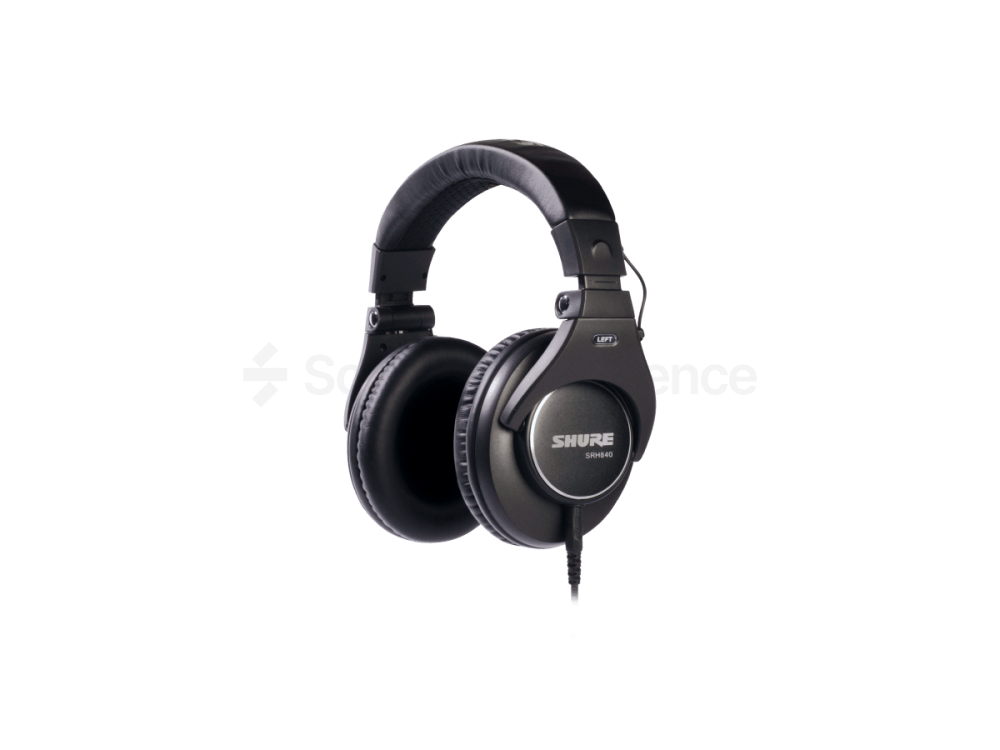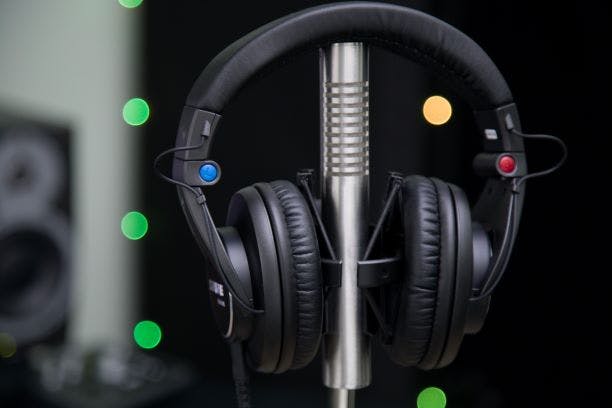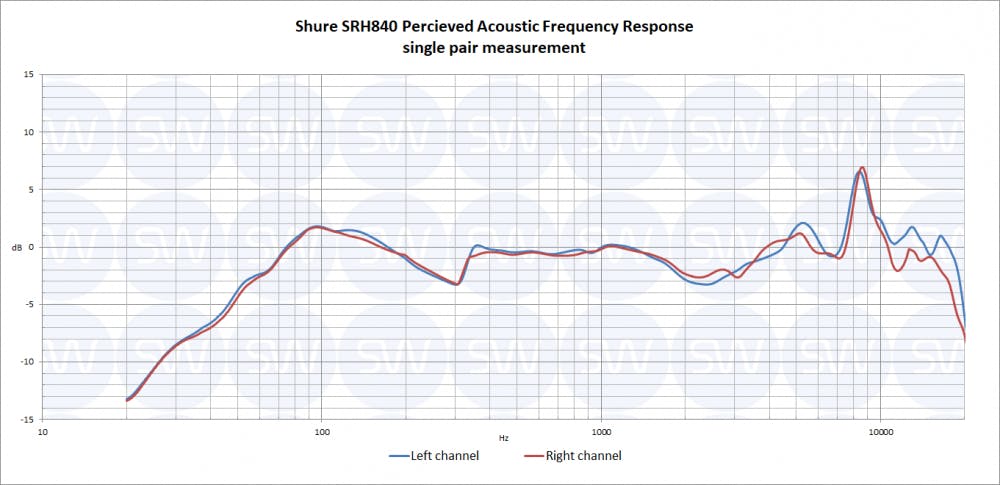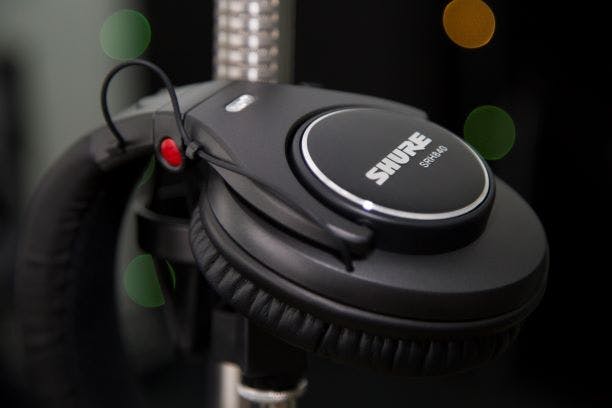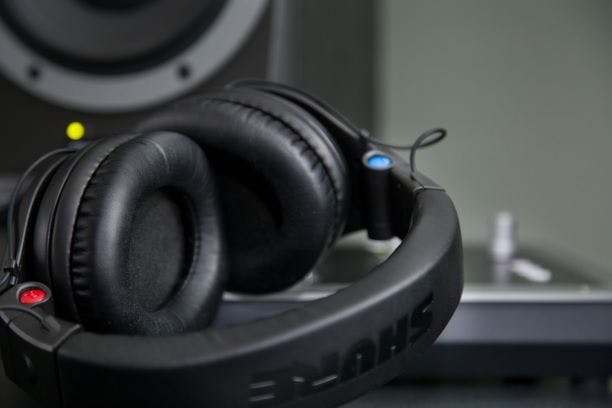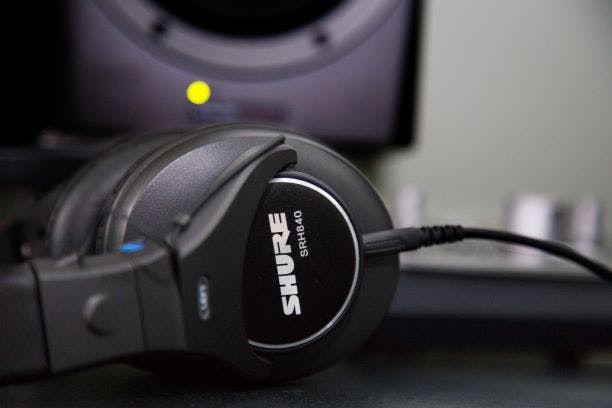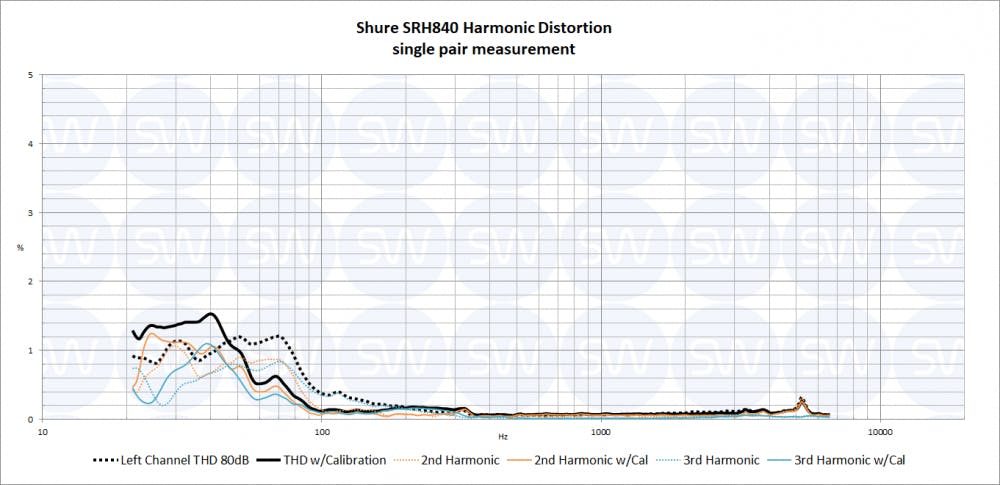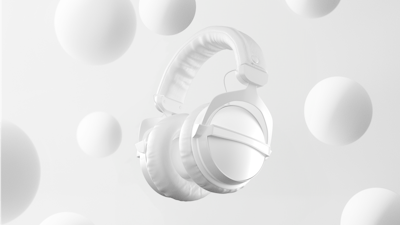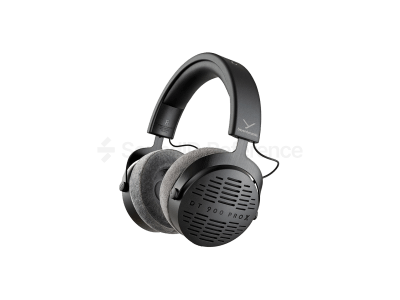One of the most successful microphone manufacturers – Shure, also knows a thing or two about how to develop great sounding headphones. This week, let’s look at the SRH840, a model that resides in the very crowded €120-150 studio closed-back headphone segment.
- Impressively neutral frequency response
Pros list with SoundID Reference calibration
- Flattened out the remaining frequency response imperfections
- Questionable durability
A quick google search will return more than a few reports from users breaking SRH840 within the guarantee period, then receiving a replacement pair and breaking that one as well. They don’t seem that fragile when handled, however, the build is almost entirely plastic and does not inspire confidence. Also, it’s not a great design to route the cable from the left to right channel externally, making the connection very vulnerable. The headband and ear pads feel adequate but are nothing exceptional.
Sound is the department where SRH840 shines – Shure sure knows how to develop neutral-sounding headphones! For this exact pair, the mid-range is remarkably flat, although for others we measured it’s a bit elevated, the overall shape of the curve remains very smooth with no distinct spikes or dips, which is always a good thing. The resonance at about 8 kHz is relatively unobtrusive when compared to how other headphones can make the high range ear-piercingly bright. The subtle bass boost can be a few dB’s more pronounced than for the pair pictured here, but it’s still remarkably neutral.
There’s a recurring trend of low end imbalance among our sample pool, from about 200 Hz down, some pairs show imbalance up to 3 dB. In the most severe cases, this is enough of a difference to be audible. However, this range almost always will be mono, so it shouldn’t interfere with your panning decisions.
When it comes to long listening session comfort, the opinions among testers were more divided than usual. People with larger heads and ears got annoyed with wearing them after 30 or so minutes while people with medium and smaller head sizes loved them. Also glasses wearers rated comfort as above average. It’s always best to try out headphones for a longer period before purchase to check how well they fit you, and with SRH840 this is especially true.
It’s tricky to rate the value of SRH840 due to the many reports of the model breaking too easily. Sound is among top closed backs though. Through our testing period, SRH840 showed no signs of potential failure, it’s entirely possible that if you don’t transport them and handle them carefully, you’ll have a great sounding monitoring tool for many years.
THD is composed of 2nd and 3rd harmonic distortion in almost equal amounts and the overall figure is low enough to grant transparent sound with no audible artifacts. For recent drivers, it’s pretty common to have low harmonic distortion, yet there are rivals that perform worse.
How accurate and consistent is the correction effect among different listeners?Listeners with smaller heads might perceive less bass. The rest of the spectrum is delivered consistently regardless of the listener’s physical properties.
How much do they differ pair to pair in terms of frequency response?In the low end we’ve measured about +/- 3 dB spread among the eleven pairs measured. Two out of eleven showed about a 3 dB increase from 400 Hz – 2 kHz. Other than that, tolerances are quite tight.
Rating
Conclusion
If you’re the kind of person that’s neat and careful with your equipment, SRH840 is worth your consideration. Just be sure to try them out before taking the leap as fit can be problematic if your head is on the larger side. When it comes to sound though, SRH840 goes against the best closed-backs out there, regardless of price!
For more information about Shure headphones, please read our other reviews – SRH1540, and SRH1840.
You can order individual calibration for your Shure headphones from our store here.
Continue reading our other headphone reviews here.
Final Rating
Calibration Enabled
Calibration
